Forms of Creation, and Decay. Louise Bourgeois at Schinkel Pavillon
- Christian Hain
- May 9, 2018
- 4 min read
Updated: Mar 23, 2020
(Berlin.) This year, Schinkel Pavilion won the race: Their Gallery Weekend Berlin show opened one week prematurely, days before everyone else. This, of course, secured them the local art scene’s undivided attention, and they all came to the opening, from artists and curators to art fair managers and collecting advertising moguls. Perhaps CEO Nina Pohl and crew couldn’t wait any longer, now that the cranes and scaffoldings have left: After years of living and exhibiting in what felt like a warzone, the works are finished, finally!
A reason to celebrate, it’s even become easier to get there – you never knew how close the next metro station really is. Everything felt fresh and new, so much, it took a moment of orientation to adapt and place yourself: “See, that’s where we came in the last time!”.
The neighbourhood has become a clean and sober piece of modern Berlin with apartments that only important art collectors can afford, and plenty office space to generate the funds for their important art collections. Nothing has transpired yet about the future of the cosy little exhibition space, but we would be surprised, should it not be bleak: This seems no longer a place for non profit art foundations. The first new neighbours, those few who’ve already moved in, were casting a doubtful eye at the proceedings on Schinkel’s balcony that had opened for the first time in a while.
Maybe they had better start looking for the next big construction project in Berlin – there is never a lack of them.
That huge balcony offered great views on the adjoining business school’s impeccable lawns (perfect for playing... tennis would be too plebeian if you’re studying here, and so’s Golf – Polo must be it! although,... poor gardeners), where this Friday night at 9 p.m. still, some students could be observed preparing for lectures. You could even catch a glimpse of the Berlin Cathedral on Museum Island (or is it the other direction, and this was just some church?) behind the new apartment blocks. Maybe even more important: Befitting the festive occasion, beverage prices appeared to have halved compared to previous openings – but it was not even necessary, the show impressive in its own right!
Schinkel Pavilion goes big - could it be a change of policy to express their ambition, to assert their relevance in anticipatory self-defence? Following on flashy shooting star Jordan Wolfson, now it’s an even more illustrious name with Louise Bourgeois. The Empty House focuses on her bean bags, no: sack forms is the official term, sculptures she’s been working on a lot during the last two decades of her career. We’re told, the artist started to “explore the possibilities of the sack form” in the early 1990s, but it took ten more years until she regularly used them in her work. “For Bourgeois, the sack form is both an architectonic structure and a representation of the female body in its various aspects of growth and decay, plenitude and incompleteness. Thus the empty sack may suggest an empty house but also symbolize an infertile woman or the bad breast that does not provide milk.” (quotes from Schinkel Pavilion’s press release.)
Could we just say, “saggy self-portraits in wrinkled form, documents of autobiographical decay”? And did she take inspiration from pincushions or observing Hacky-Sack (footbag) players?
When it comes to Louise Bourgeois, you expect spiders and foetuses, and Schinkel delivers. There’s some blood-red water colours of pregnancy, and they put at least one spider sculpture in, one of the works she's best remembered for. For the rest, homeware and genitals, teabags and peanuts (associatively spoken, once more). A recurrent form seems strangely familiar, steel and cotton reels and a cucumber shaped something, well-known abstract paintings solidified in sculpture. The allusion to drip infusions is quite obvious too, a menace, a message of death imminent. The dark undertones become more and more apparent, as the artist was approaching the end of her career and ninety year existence. The boxes around most sculptural works are a means to protect, but they also preserve, seal them for (their, and her) afterlife, anticipating a grave or glass coffin. Sackcloth as a mourning dress, the artist certainly liked association plays.
The centrestage upstairs takes an installation that could almost be The Empty House lending its name to the show, were it not a) titled Rabbit Skins, Scrapped Rags for Sale, and b) were it actually empty: The cage imprisons – or protects - clothes, hanging suspended from chains and a column (->Frida?) of pebbles culminating in a fur collar (quite...unambigous). The door is open, but you can not get in, nor anything leave the inside.
There’s no info on the works available in the show itself - maybe because Schinkel’s chief curator is a photographer, and we all know how they hate nothing as much as people and obects - wall texts, labels - blocking the views of a perfect shot. On the other hand, you get a (free!) booklet with pictures and poems, and on opening night even a poster on top. A nice show of a legendary artist, with seemingly simple works that yet are reaching far.
Louise Bourgeois, The Empty House, 21 April-29 July, Schinkel Pavilion
World of Arts Magazine – Contemporary Art Criticism

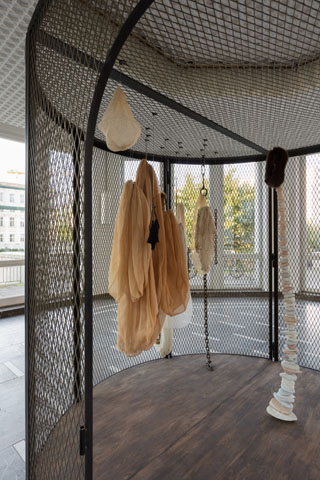

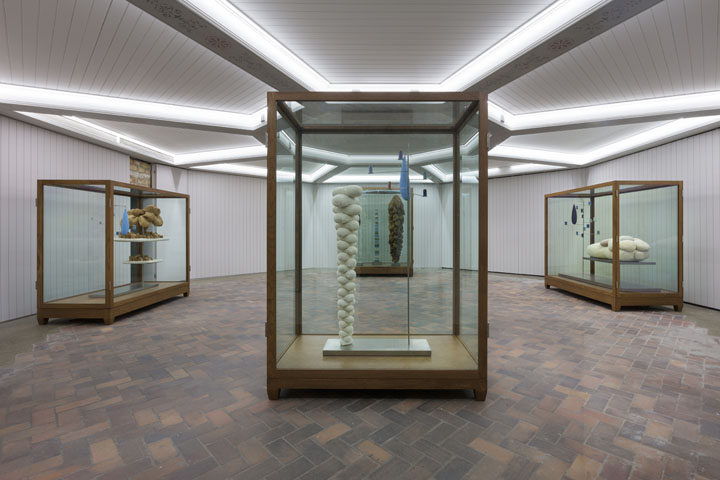

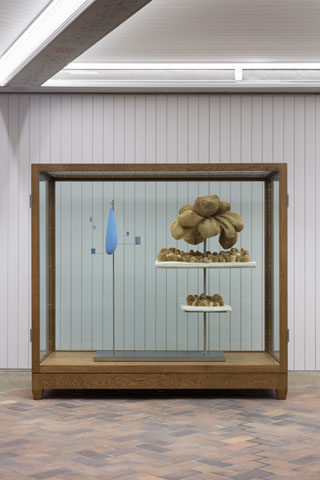

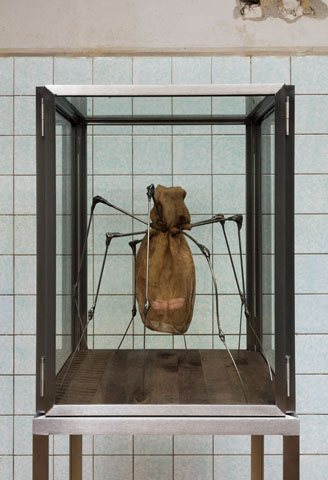

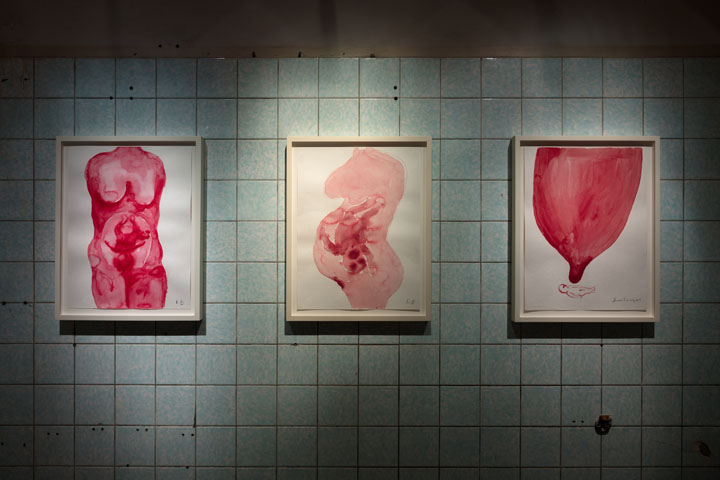
Comments